"MARCOS
MAUSOLEUM & MUSEUM BATAC CITY"
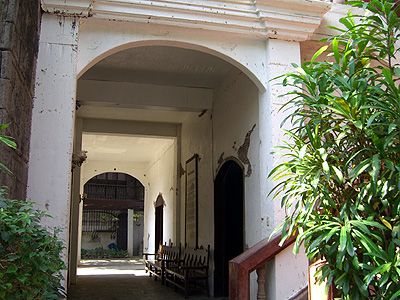 The
Marcos
Museum
and Mausoleum in Batac, Ilocos Norte showcases memorabilia of the late
Philippines
President Ferdinand E. Marcos and a large stately and gloomy tomb housing his
embalmed remains which are contained in a vacuum-sealed glass coffin. Within the
property of the Marcos family is a cluster of three houses and the hallowed
grounds of the mausoleum. The Museum is the first structure seen from the main
street and is the one which follows the lines of a colonial wood-and-brick
house, with solid ground floor walls and an upper storey of wood decorated with
floral motifs. The Mausoleum is a cube of adobe blocks and is stepped towards
the top of the structure. The dark interior is divided into an entry foyer in
which are exhibited old English standards and a bust of the former president.
The
Marcos
Museum
and Mausoleum in Batac, Ilocos Norte showcases memorabilia of the late
Philippines
President Ferdinand E. Marcos and a large stately and gloomy tomb housing his
embalmed remains which are contained in a vacuum-sealed glass coffin. Within the
property of the Marcos family is a cluster of three houses and the hallowed
grounds of the mausoleum. The Museum is the first structure seen from the main
street and is the one which follows the lines of a colonial wood-and-brick
house, with solid ground floor walls and an upper storey of wood decorated with
floral motifs. The Mausoleum is a cube of adobe blocks and is stepped towards
the top of the structure. The dark interior is divided into an entry foyer in
which are exhibited old English standards and a bust of the former president.
Two
decades after Marcos was chased from power, he still draws the faithful and the
curious from this farming town. Displayed in an adobe mausoleum, his lavishly
waxed corpse lies in a family tribute, bedecked in military medals and
surrounded by faux flowers while Gregorian chants echo softly. Scores of school
children visit nearly everyday, filing past souvenir peddlers for a look of the
deposed dictator whom residents of Ilocos Norte province fondly call "
Apo
," or the Old man.
Ferdinand Edralín Marcos (September 11, 1917 – September 28, 1989) was the
tenth president of the
Philippines
, serving from 1965 to 1986. In 1972, he instituted an authoritarian regime that
allowed him to stay in power until lifting it in 1981. He was elected the same
year to another full term which was marred by personal health issues, political
mismanagement and human rights violations by the military. In 1986, he was
re-elected for the fourth time in a disputed snap election. As a result, that
same year he was removed from office peacefully by the "People Power"
EDSA Revolution. He has the distinction of being the last Senate President to be
elected to the presidency and being the first president to be elected to two
consecutive full terms.

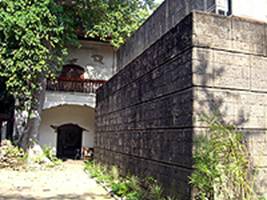
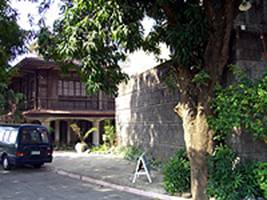

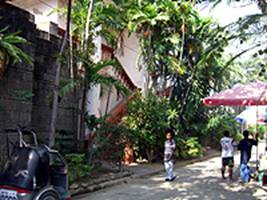

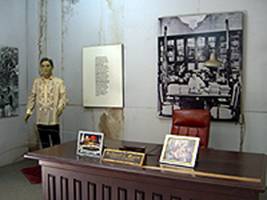
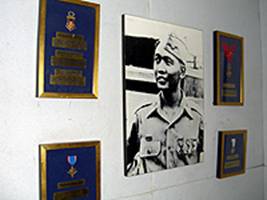


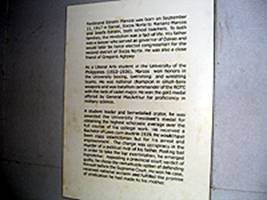

Ferdinand Marcos was born in Sarrat, Ilocos Norte to Don Mariano Marcos, a
lawyer who was an assemblyman for Ilocos Norte, and Doña Josefa Quetulio Edralín,
a teacher. He was the second of four children. His siblings were Pacífico,
Elizabeth and Fortuna. He was of mixed Filipino (Ilocano), Chinese, and Japanese
ancestry. He started his primary education in
Sarrat
Central
School
. He was transferred to
Shamrock
Elementary School
(Laoag), and finally to the
Ermita
Elementary School
(
Manila
) when his father was elected as an Assemblyman in the Philippine Congress. He
completed his primary education in 1929.
He
served as 3rd lieutenant in the Philippine Constabulary Reserve in 1937. The
same year, when he was still a law student at the University of the
Philippines
, Marcos was indicted for the assassination of Assemblyman Julio Nalundasan, one
of his father's political rivals. Marcos was convicted in November 1939. He was
offered a pardon by President Manuel Quezon, but he turned it down and
voluntarily returned to the Laoag Provincial Jail where he spent time preparing
his defense. On appeal, he argued his case before the Philippine Supreme Court
and was acquitted the following year by then-Associate Justice Jose P. Laurel.
In the University of the
Philippines
, Marcos was a member of the Upsilon Sigma Phi. After graduating with cum laude
honors in 1939, he became the topnotcher of the Philippine bar examinations the
same year.
 The
The  The
The